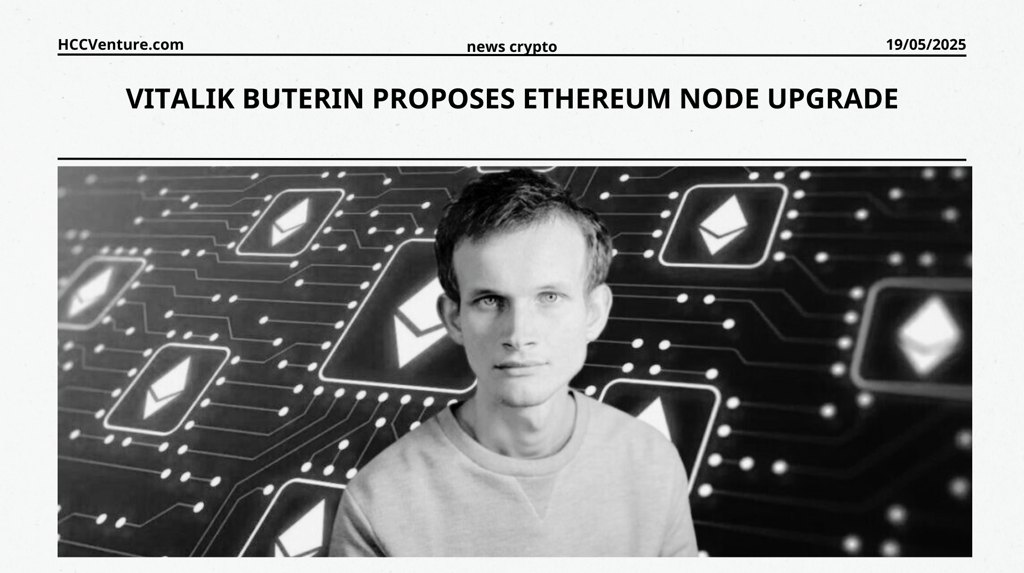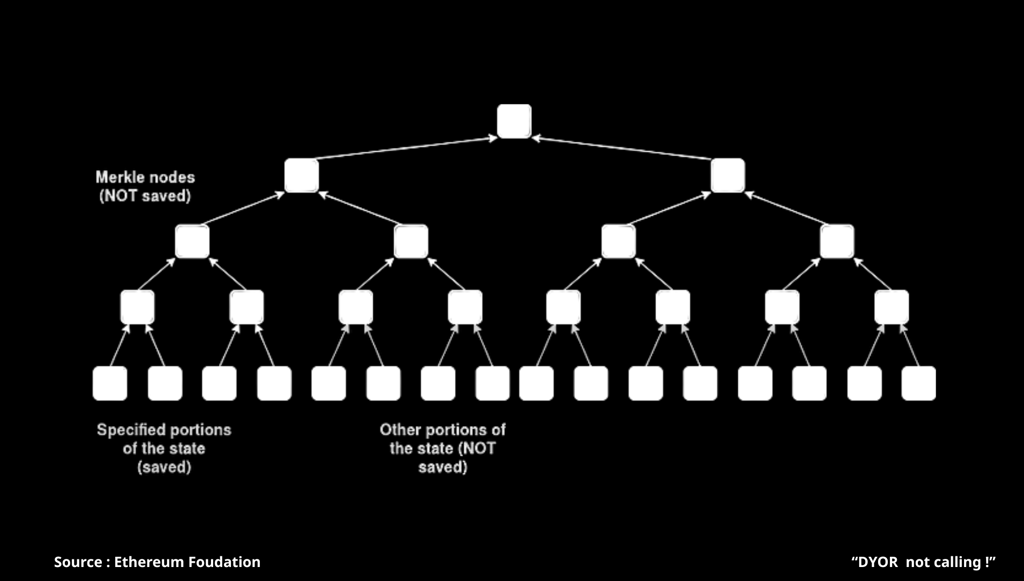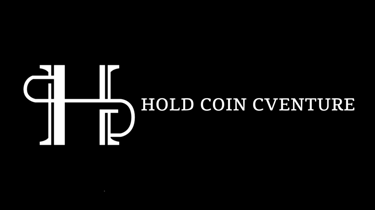Vitalik Buterin Proposes Ethereum Node Upgrade
Vitalik Buterin, co-founder of Ethereum, has announced a groundbreaking proposal to reduce the hardware burden of running nodes on the Ethereum network. The proposal, presented in a post on the Ethereum research blog, introduces the concept of “partially stateless nodes.”
TIN TỨC
5/19/20253 min read


Current context and challenges
Ethereum is one of the world's leading blockchains, supporting a wide range of decentralized applications (dApps), smart contracts, and complex financial transactions. However, running a full node on the network requires significant hardware resources, including over 1TB of storage and powerful equipment to process data.
This creates a high barrier to entry for individual users, leaving only organizations or individuals with advanced technical infrastructure to participate in node operations. As a result, the Ethereum network relies heavily on centralized services such as Amazon Web Services to run nodes, raising concerns about the risk of losing decentralization – one of the core values of blockchain.
Additionally, third-party services that provide access to blockchain data often come with privacy limitations and censorship risks. These issues prompted Buterin to look for a more sustainable solution to expand network participation.
Proposal for “Partially Stateless Nodes” and How It Works
Buterin’s proposal focuses on reducing the data storage requirements for nodes, allowing users to run nodes on personal devices such as laptops or even smartphones. The concept of “partially stateless nodes” works on the principle of storing only data directly related to the user locally, while the rest of the blockchain is verified on demand through cryptographic techniques. Buterin compares this model to a library system: users keep the “books” they use frequently and “borrow” others when needed.


Specifically, this model allows users to configure nodes to store data related to specific smart contracts, tokens, or applications through a simple on-chain setup.
Instead of requiring storage of the entire Merkle tree – the complex data structure that ensures the security of the blockchain – nodes only need to store the raw data, significantly reducing hardware requirements.
This proposal is supported by the Ethereum Improvement Proposal (EIP-4444), an initiative that aims to limit node storage history to 36 days, with older data distributed across the network via erasure coding, ensuring chain sustainability without overloading any single node.
Implications for Ethereum and the blockchain industry
Enhance decentralization by reducing technical barriers, more individual users can participate in node operation, reduce dependence on centralized service providers and enhance the distribution of the network.
Improved privacy: With the ability to access blockchain data directly from personal devices, users do not need to rely on third-party services, thereby reducing the risk of privacy invasion or censorship.
Reducing data storage and processing requirements makes Ethereum easier to scale, especially as transaction volumes and applications on the network grow.
This model enables a wide range of users, from independent developers to tech enthusiasts, to participate in maintaining the network, thereby strengthening the Ethereum ecosystem.
Evaluation and Conclusion
Despite its revolutionary nature, the proposal still faces a number of challenges. Implementing “partially stateless nodes” would require significant changes to the Ethereum protocol, including the integration of EIP-4444 and other technical improvements. This could take years to complete, as Buterin has acknowledged in previous statements about Ethereum’s technical intricacies. Additionally, ensuring the security and efficiency of semi-stateless nodes when verifying data on demand would be a difficult task to solve.
However, if successfully implemented, this proposal could mark a turning point for Ethereum, bringing the network closer to its goal of becoming a fully decentralized platform that is accessible to everyone. It is also a testament to Buterin's commitment to solving Ethereum's core problems, from scalability to decentralization, amid increasing competition from other blockchains such as Solana or Avalanche.
Once again we give our opinion on potential projects in the crypto market. This is not investment advice, consider your portfolio. Disclaimer: The views expressed in this article are solely those of the author and do not represent the platform in any way. This article is not intended to be a guide to making investment decisions.
Compiled and analyzed by HCCVenture
Join our telegram community: HCCVenture
Explore HCCVenture group
HCCVenture © 2023. All rights reserved.


Connect with us
Popular content
Contact to us
E-mail : holdcoincventure_contact@hccventure.com
Register : https://linktr.ee/holdcoincventure
Disclaimer: The information on this website is for informational purposes only and should not be considered investment advice. We are not responsible for any risks or losses arising from investment decisions based on the content here.


TERMS AND CONDITIONS • CUSTOMER PROTECTION POLICY
ANALYTICAL AND NEWS CONTENT IS COMPILED AND PROVIDED BY EXPERTS IN THE FIELD OF DIGITAL FINANCE AND BLOCKCHAIN BELONGING TO HCCVENTURE ORGANIZATION, INCLUDING OWNERSHIP OF THE CONTENT.
RESPONSIBLE FOR MANAGING ALL CONTENT AND ANALYSIS: HCCVENTURE FOUNDER - TRUONG MINH HUY
Read warnings about scams and phishing emails — REPORT A PROBLEM WITH OUR SITE.
